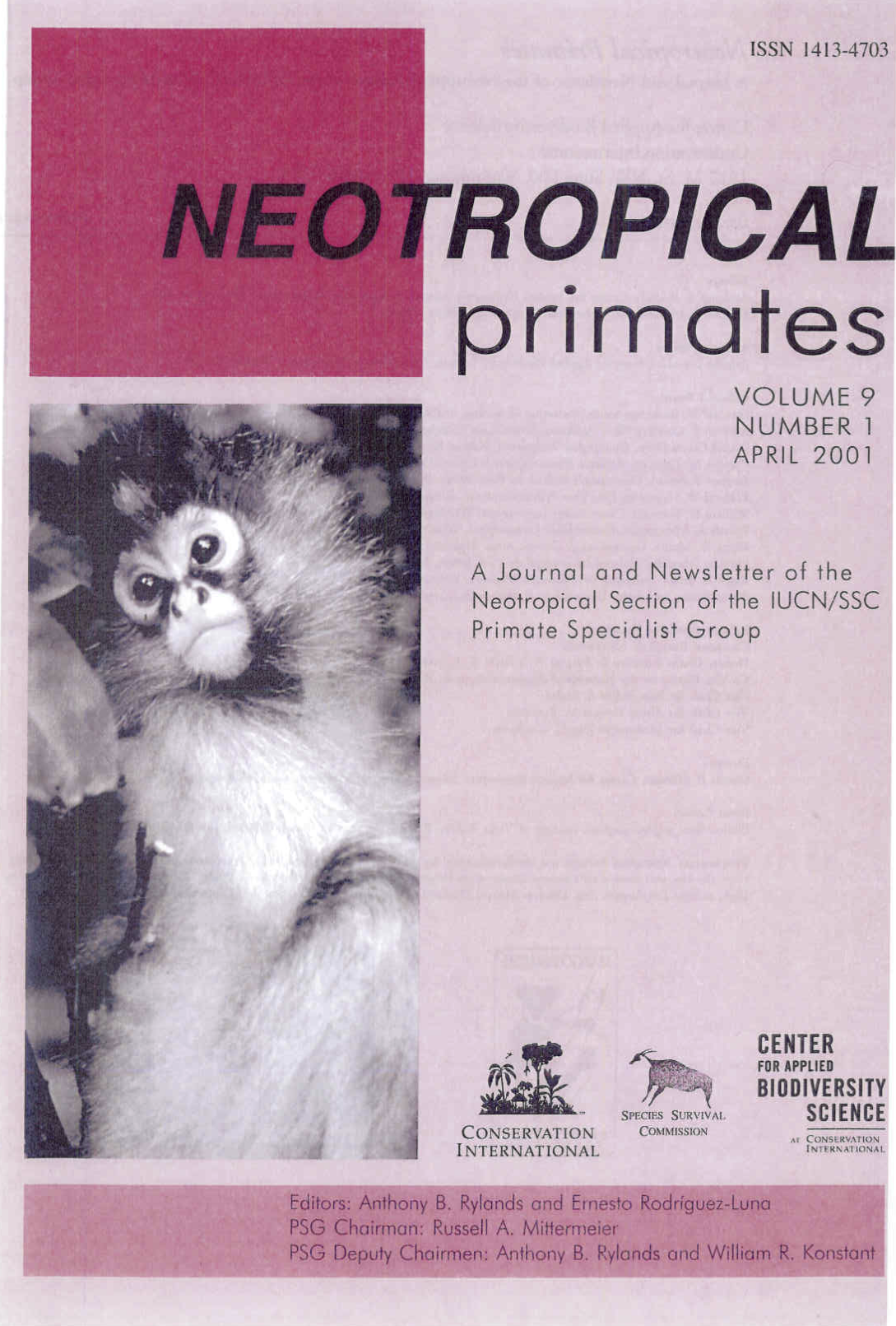Population growth in the Belizean black howling monkey (Alouatta pigra)
DOI:
https://doi.org/10.62015/np.2001.v9.475Keywords:
Alouatta pigra, Belize, populacion growth, intrinsic rate of increase, age distribucion, infant survival, male strategiesAbstract
Population growth in black howling monkeys (Alouatta pigra) was studied in an area of 0.63 km2 from 1990 to 1999 at the Community Baboon Sanctuary, Bermudian Landing, Belize, Central America. Population density increased over time, and population growth was found to be density-dependent, with a higher rate of increase between 1991-1996 than between 1997-1999. The shape of the age distribution of the population was similar across years, although the proportion of adult males in the population decreased significantly with increased population density. Changes in membership over time for 18 monkey groups suggested that population growth may also result from an increase in the number of groups and length of tenure of groups. Groups with no or only one immature (infant, juvenile, or subadult) were confined to the period of population increase. Although more male infants were estimated to have survived to the juvenile age class, the result was statistically insignificant. Interbirth intervals were within the range for other species of Alouatta. Our results also indicate that increased population density and consequent increases in mean group size decrease the ability of single males to monopolize female groups due, in part, to decreased opportunities for single males to found new groups. A consequence of this condition would be increased male-male competition for mates.

Downloads
Published
Issue
Section
License

This work is licensed under a Creative Commons Attribution-NonCommercial-ShareAlike 4.0 International License.


